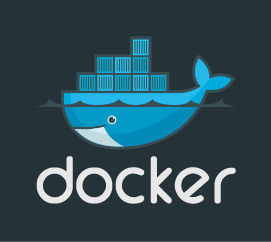Creating a docker VM on Azure manually

In order to create this site, I take the opportunity to use Docker creating a new VM on Azure. In this article I will share the steps I used to create it by hand (without using the Docker VM Extension which makes it even easier).
First of all, I created an Ubuntu 14.04 virtual machine on Azure using the Azure Portal. I choose this ubuntu version because its the latest Long Term Support image available at the moment. In order to create the VM, just select new, choose the Ubuntu 14.04 image and follow the steps. In case that you need more details, you can find them in this article.
Once the VM was created, I configured the DNS name label for the VM in the configuration blade of it's Public IP address (You can find it in the resource group). By specifying the DNS name, you will be able to locate your VM easily. Additionally, I configured the Inbound Security rules in the Network security group, adding port 80 for http access. Moreover, I configure my domain's DNS (In this opportunity I choose Namecheap) to point to the VM's URL using CNAME.
Then, I connected to the VM using ssh (don't forget to append your username to avoid issues with your local username by using shh username@url) and started the configuration part. First of all, I update the dependencies by executing the usual commands for ubuntu:
sudo app-get update -y
sudo app-get upgrade -y

Once everything is up to date, its time to install docker (else, it wouldn't be a Docker VM :P). Docker documentation explains how to install and configure docker in Ubuntu in a really easy way. You can find this information here. To sum up, the steps are the following:
-
Update package information, ensure that APT works with the https method, and that CA certificates are installed.
apt-get update -y apt-get install apt-transport-https ca-certificates -y -
Add the new GPG key.
sudo apt-key adv --keyserver hkp://p80.pool.sks-keyservers.net:80 --recv-keys 58118E89F3A912897C070ADBF76221572C52609D -
Create the following file /etc/apt/sources.list.d/docker.list and add the following entry (for ubuntu 14.04)
deb https://apt.dockerproject.org/repo ubuntu-trusty main -
Update the APT package index.
apt-get update -
It’s recommended to install the linux-image-extra kernel package. The linux-image-extra package allows you use the aufs storage driver. To do so, execute the following command.
sudo apt-get install linux-image-extra-$(uname -r) -
Install docker by executing the following command.
sudo apt-get install docker-engine -
Verify docker was installed correctly, execute the following command. If it is needed, start docker server executing
sudo service docker start.sudo docker run hello-world -
I also created the docker group and added my user to it, in order to avoid using sudo to run docker.
sudo usermod -aG docker ubuntu
I also installed docker-compose following the instructions on this article.
That's it. By following all the steps, I had my Docker VM up and running. In the following posts I will be explaining the architecture and the ideas and technologies behind this site.

